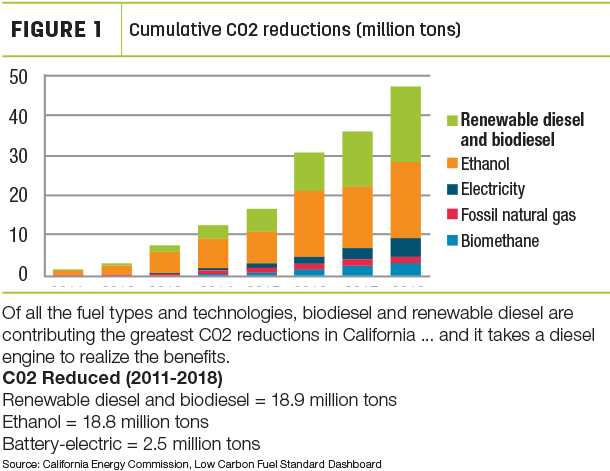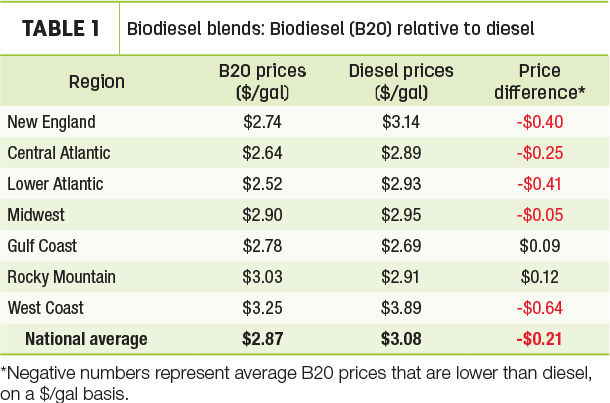Nowhere is there more change than in the energy sector. Electric bills now include the option to choose your fuel source.
Coal, natural gas and nuclear fuel sources to generate electric energy are still dominant but declining due to market forces and clean air and climate concerns, while solar wind is gaining ground.
When it comes to vehicles and equipment, “fill it up” used to be a simple thought process. Not anymore. “Will that be gasoline, diesel, natural gas, hydrogen, electric or biodiesel or renewable diesel?”
These choices underscore the shifting dynamics of energy today; the transportation sector is now in the spotlight, having moved to the sector with the most greenhouse gas emissions. In California, home of the nation’s most progressive climate policy that is now nearly a decade old, the Air Resources Board motto is, “Electrify everything possible and use low-carbon fuels in everything else.”
But even with today’s seemingly full-on focus on electrification, experts agree it will likely take many decades to have meaningful market share and impacts because of many issues like the attendant infrastructure needs, acquisition time for replacing existing vehicles with all electric ones, not to mention fuel prices and consumer preferences. Even so, the “buzz” around electrification is palpable, but what to do in the intervening decades?
Enter renewable low-carbon transportation fuels: biodiesel and advanced renewable biodiesel.
While ethanol is the undisputed king of renewable transportation fuels (16.5-billion-gallon capacity in 2019), biodiesel (that produced predominantly from soybeans) clocked in at about 3 billion gallons. Iowa leads the U.S. in biodiesel production capacity (445 million gallons per year), followed by Texas (375 million gallons per year) and Missouri (247 million gallons per year), followed by Illinois (162 million gallons per year), according to the USDOE Alternative Fuel Data Center.
California’s low-carbon fuel standard (LCFS) requirement forces oil companies in California to reduce the carbon content of the fuels they sell, which is predominantly happening now solely due to the use of biodiesel and advanced renewable biodiesel fuels. These are very low-cost and very low-carbon fuels relative to other fuel options and technologies.
While we are a long way away from electrifying every passenger car or 18-wheelers for interstate use, today the majority of greenhouse gas emissions reductions and progress toward its progressive climate policy in California have come not from electrification but the use of biodiesel and renewable diesel fuel (Figure 1), burned by – you guessed it – diesel engines of all kinds.

Diesel technology is a solution for helping to positively impact climate change.
Biodiesel today is not just a byproduct of soybean processing. It is made from an increasingly diverse mix of resources such as recycled cooking oil, soybean oil and animal fats; it is a renewable, clean-burning diesel replacement that can be used in existing diesel engines without modification. It is the nation’s first domestically produced, commercially available advanced biofuel.
Technically speaking, fuel-grade biodiesel must be produced to strict industry specifications in order to ensure proper performance. Biodiesel blends meet specifications for legal diesel motor fuel (ASTM D7467). Also, 100% biodiesel, or B100, must meet the ASTM definition for biodiesel itself (ASTM D6751). Raw vegetable oil cannot meet these diesel fuel specifications and therefore is not considered biodiesel.
You may be using biodiesel and not even know it. Biodiesel is available nationwide, and only blends over 4% are required to be labeled at the pump. Most often, biodiesel comes in blends of B5, with B20 commonplace in the Midwest. Most major engine companies have stated formally that the use of blends up to B20 will not void their parts and workmanship warranties. This includes blends below 20% biodiesel, such as the 2% biodiesel blends that are becoming more common.
Biodiesel has grown from about 100 million gallons in 2005 to 3 billion gallons in 2019. Today, there are about 125 plants producing biodiesel with a capacity to produce about 3 billion gallons annually. Biodiesel is available at over 192 separate public fueling stations nationwide and delivered to hundreds of private fleet locations as well.
Biofuels use in the U.S. is largely driven by the Renewable Fuel Standard (RFS) – a U.S. government policy enacted in 2005 and expanded in 2007 that requires minimum amounts of renewable fuels to be blended into the nation’s transportation fuel supply. Under the RFS, Congress directed the EPA to maintain renewable fuel success with continued, sustainable growth to support the biodiesel industry and job creation. The RFS requires a minimum of 1 billion gallons of advanced biofuels to be blended annually beginning in 2010, rising to 21 billion gallons by 2022. A $1-per-gallon blenders tax credit has been essential to fueling market investment and growth.
Basic biodiesel processing produces a fatty acid methyl ester finished product (FAME). Another way to process waste fats and food byproducts is a different process called transesterification that results in a different kind of product, a non-esterified renewable diesel (NERD). While the feedstocks are identical, the production of renewable diesel fuel uses a different chemical process more akin to traditional refining, to yield a drop-in hydrocarbon replacement fuel.
Today, this fuel is made from a mix of used cooking oil, waste fish fat, waste animal tallow, technical corn oil and residue oils. Compared to petroleum diesel, these advanced renewable biofuels deliver up to 86% reduction in greenhouse gas emissions, 40% reduction in particulate matter and 15% fewer nitrogen oxide emissions. No new infrastructure required. In many cases, all that is needed is a label on the pump identifying the fuel as renewable diesel fuel. Overnight, public and private fleets in California have lowered their carbon footprints without changing a single vehicle or investing in expensive fueling infrastructure.
As for cost, consumers of biodiesel and renewable diesel fuel will have to pay about the same for their fuel as regular petroleum diesel. Those looking for B20 will typically pay about 21 cents less per gallon compared to regular petroleum diesel, according to the most recent data collected by the Department of Energy as of October 2019 (Table 1).

Since renewable diesel fuel volumes are lower than biodiesel, government agencies do not track prices as they do for biodiesel. Recent surveys of fleets which have made the switch to renewable diesel fuel report that they pay a 21-cent premium above petroleum diesel fuel. Much of the fluctuation in price reflects change in demand. With more interest and demand for the fuel, survey respondents expect that price fluctuation will even out. Read more on this here.
Fleets that have made the transition note the low cost and added benefits, particularly in relation to other alternative fuels and technologies. One of the early adopters of renewable diesel fuel was the city of Oakland, which committed to operate its fleet of 375 trucks and equipment with the fuel.
“Although at first renewable diesel seemed too good to be true, it truly has proven to be a ‘miracle fuel,’” says Richard Battersby, CAFM, CPFP, assistant director of Oakland Public Works. “Making the switch to renewable diesel is absolutely the easiest alternative fuel implementation I have ever experienced.”
And yes, agricultural equipment is advanced-biofuel ready. For example, Valtra tractor (AGCO) even uses renewable diesel fuel as its first factory fill.
So in a time of energy transition, it is important to remember there are many ways to achieve lower greenhouse gas emissions, including the use of advanced renewable biofuels. Whether or not battery-based electrified technologies will fully pan out in all the different sectors remains to be seen but, until such a time, advanced renewable biodiesel fuels offer a proven near-term way to lower your carbon footprint without buying a whole new wardrobe.







